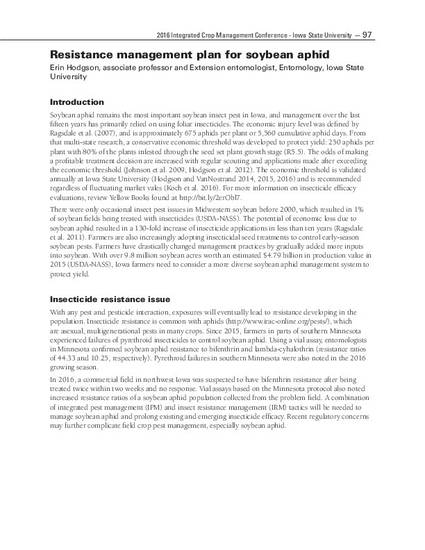
Soybean aphid remains the most important soybean insect pest in Iowa, and management over the last fifteen years has primarily relied on using foliar insecticides. The economic injury level was defined by Ragsdale et al. (2007), and is approximately 675 aphids per plant or 5,560 cumulative aphid days. From that multi-state research, a conservative economic threshold was developed to protect yield: 250 aphids per plant with 80% of the plants infested through the seed set plant growth stage (R5.5). The odds of making a profitable treatment decision are increased with regular scouting and applications made after exceeding the economic threshold (Johnson et al. 2009, Hodgson et al. 2012). The economic threshold is validated annually at Iowa State University (Hodgson and VanNostrand 2014, 2015, 2016) and is recommended regardless of fluctuating market vales (Koch et al. 2016). For more information on insecticide efficacy evaluations, review Yellow Books found at http://bit.ly/2erObl7.
Available at: http://works.bepress.com/erin_hodgson/269/
